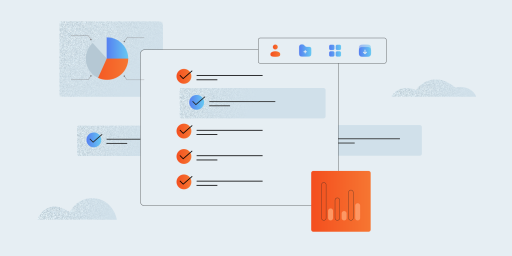Penetration testing (or pen testing) is a part of comprehensive security testing to exploit weaknesses and vulnerabilities in systems, networks and software by creating simulated attacks and actively breaking into a company’s network and sensitive databases. Such attacks are carried out by a team of testers of security professionals.
Let’s find out in detail, what is penetration testing with example and what is it used for?
Do not confuse pen testing with vulnerability testing, which is also a part of security testing. During penetration testing, testers do not identify security risks or defects and inform the client. Instead, they prove to the client the consequences of what is going to happen to the application if the security problems are not fixed. The impact of the security problems is exposed. In penetration testing, a tester is in the shoes of a hacker, trying to do what hackers usually do. It reproduces the actions of real-world cybercriminals and is allowed only with the permission of a client.
Do you know what is the main reason for simulating attacks and why is penetration testing important for software development life cycle?
Why Is Penetration Testing Important?
Penetration testing not only provides a view of a system from a security posture but also assesses the potential impact of what can be compromised. But before answering why this is important, we first need to answer the question, what is the primary purpose of penetration testing? The primary purpose is to prevent a data breach, which in turn helps to find out whether there are weaknesses in the network or in software.
It also important because:
- shows the real possibility of the application being hacked.
- provides insight into the maturity level of a system from a comprehensive security perspective of what exactly it is like to be hacked.
- helps to identify weaknesses within the code that is potentially sensitive to the attack.
- analyzes existing security controls (whether they pick up an authorized user or hacker attack).
- exposes weaknesses and flaws before hackers exploit them.
- saves money required for setting up all the security measures on a system by narrowing down the variety to the required measures only. The security vulnerabilities that are needed are covered.
With countless tactics used by cybercriminals, penetration testing has never been more required. The defense of the system is inevitable without knowing its strengths and weaknesses.
What Are The Different Types of Penetration Testing?
Depending on the level of information, pen testing can be either white box (a tester knows about the way the network is mapped) or black box (a tester goes full lifecycle with public information only, without internal details and configurations). A black box technique, or an external technique, represents a real malicious attack as it is usually conducted by an uninformed cyber attacker. It is a time-consuming technique that can take up to two months of work. Of course, everything depends on the project complexity. And what is meant by penetration testing if it is a white box technique?
The white box technique is more thorough. It provides an in-depth view of a system’s security condition with as much detail as possible. Sophisticated, therefore expensive tools might be required to conduct such a comprehensive level of testing with a huge area to cover. It typically takes three to four weeks to complete. Both techniques are equally important as long as the goal is achieved.
There is one more technique, which some companies opt to because of the less access to the internal information. It is called a gray box technique. A tester has only partial understanding of a system or partial access to a network.
Identifying weaknesses requires an integrated approach in penetration testing in various areas:
- Application penetration. A tester breaks into web-based applications, browsers, plugins, and scriptlets.
- Infrastructure network penetration (focuses on security gaps in the network). One of the most popular types, used to protect the network from route attacks, IPS/IDS invasion attacks, SSH attacks (trial and error techniques to reach a server), proxy server attacks, etc.
- Wireless penetration reviews the connections between the devices that are connected to the company’s WiFi. It includes everything from smartphones to laptops.
- Client side penetration. A tester discovers flaws and particular attempts to get unauthorized access (SSH attack, proxy server attack, FTP/SMTP-based attack) in client side applications (e.g., Adobe Photoshop, Firefox, Safari, etc.).
- Social engineering checkup includes phishing attacks, smishing, tailgating, and pretexting.
- Physical and social penetration is a non-technical approach with a focus on the physical security of sensitive information.
Each type has a certain set of skills and tools needed to carry it out properly.
Benefits of Penetration Testing
Security is one of the major issues companies face. From a business perspective, implementing ethical hacking to address problems related to high-severity flaws in this area is one of the best steps.
- It reveals vulnerabilities and flaws and demonstrates the access someone can have through the discovered issues. This helps to proactively eliminate potential risks and prioritize corrective measures required for them.
- It gives a view of real security risks and their consequences for a specific part of a system.
- It demonstrates the efficiency or inefficiency of the existing controls and how they are established and maintained.
- It shapes information security strategies in a company.
Let’s have a look at what does penetration testing involve and what steps should be performed?
What Are the Stages of Penetration Testing?
Only systems that are legally allowed to conduct testing are permitted for that. Any unauthorized access to another system is strictly forbidden. A quality test cannot be started without a goal and objective that have to be followed and achieved, no matter whether it is to break into a particular system or to find a hackable one. It mimics the strategies used by a hacker and can be split into small, manageable tasks.
Team of testers that simulate attacks typically follow a certain algorithm that includes next phases of penetration testing:
- Planning & reconnaissance. A tester collects data on the target that is going to be under test. He/she conducts thorough research of publicly available information and interacts with the system directly.
- Vulnerability scanning. A tester finds potential vulnerabilities by narrowing them down and classifying what can be exploited.
- Exploitation. A tester designs an attack and gains control over the system. This step is the realization of the identified flaws.
- Maintaining access. A tester identifies the kind of data that can be revealed and illegally transferred, demonstrating the potential impact of that. A report that indicates every step and tool used during the process is created. What has been found? What are the recommendations for remediation?
Reporting on findings plays a critical part. A custom-tailored report is created based on the results obtained during the penetration testing and presented to the customer. It is a document that provides concrete directions and guidance on how to eliminate the risk of exposure. Usually, how penetration testing is performed is determined by the specific project under test. Manual and automated (framework and tools setup, which can be reused on every iteration) approaches can be applied.
How Often Should Penetration Testing Be Done?
The test can be run frequently to keep a system’s security level updated. Or you can conduct it one or two times a year. The only recommendation is to organize a security assessment at least once a year. But why is it important to continuously conduct penetration testing in some cases? Any time there is a drastic change in the system environment or an improvement in cyber policy, a new pen test is conducted. To get more out of your annual security checkup, small assessments may be carried out throughout the year.
A couple of factors define how frequently a company might need a new pen test per year: personal business risk assessment, compliance with regulations and standards, critical changes in the environment, software, and policy. All companies are different. The best option is to create a strategic security assessment plan for each of them individually.



